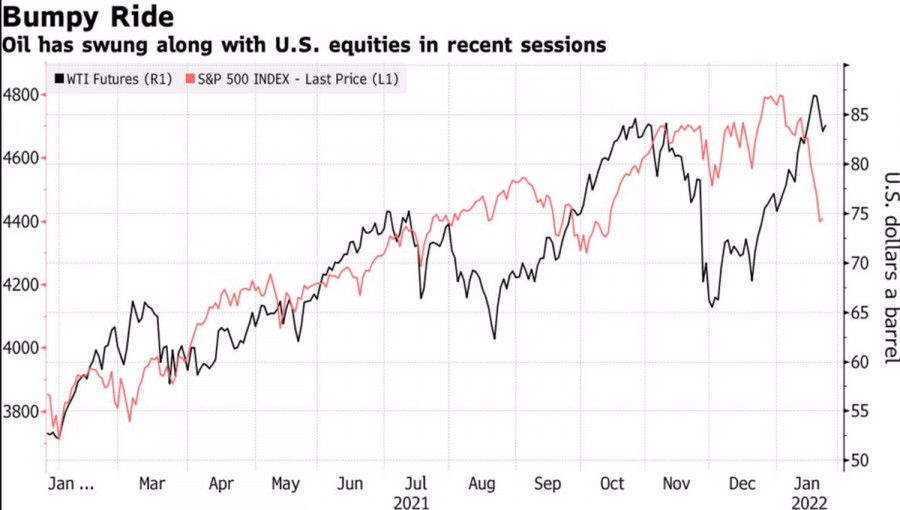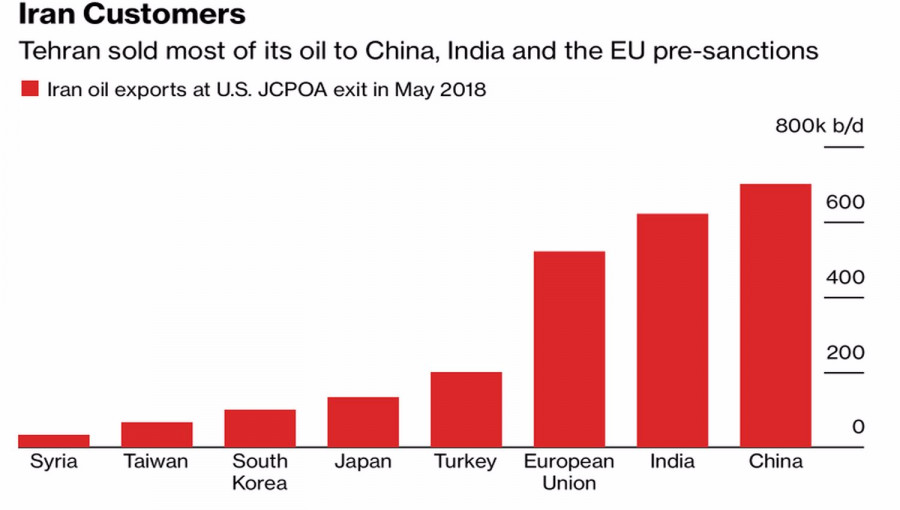
If U.S. stocks are an indicator of global risk appetite, then oil is an indicator of the health of the global economy. As a rule, the S&P 500 and Brent go the same way, but at the start of 2022, they parted ways. Fears that the Fed's aggressive monetary tightening will slow U.S. GDP growth are leading to a sell-off in equities as oil rises amid a recovery in global demand and supply woes. It seems that the health of the global economy is all right, only investors are in no hurry to buy risky assets.
Dynamics of oil and S&P 500

Despite the calls of U.S. President Joe Biden, American shale oil producers are in no hurry to increase production and prefer to spend money not on new drilling rigs, but on payments to shareholders and on loans. It is not conducted on the speech of Biden and OPEC+. At the same time, even increasing production by 400,000 b/d per month, in the light of the limited technical capabilities of the countries participating in the Alliance, looks problematic. BNP Paribas estimates that OPEC+ will not be able to meet its target, also because spare capacity has been halved over the past year.
The situation is aggravated by the tense geopolitical situation in the Middle East and Eastern Europe. In the first case, we are talking about attacks by Houthi militants on the oil facilities of the UAE, about the explosion of an oil pipeline in Turkey, which for some time stopped the supply of oil to this state from Iran. In the second, about the escalation of the conflict between the Russian Federation and the West, which may result in the introduction of Russian troops into the territory of a neighboring country.
According to RBC Capital Markets, the likelihood of such a scenario is 50 to 50. Sanctions against Moscow will lead to higher prices for gas in Europe and oil products, which are planned to replace it. In the worst case, events will develop according to the Iranian scenario. A sharp decline in Tehran oil exports at one time led to an increase in Brent and WTI quotes.
At present, it is Iran, not U.S. shale producers, that is the wild card in the oil market. If the country manages to remove restrictions, oil prices are able to enter a correction.
Selling Iranian oil before sanctions

This will be facilitated by overly inflated speculative net-longs for key grades of oil and oil products. Hedge funds have built them up for five consecutive weeks and brought the ratio of bullish longs to bearish shorts to 6.24 to 1, compared to 3.83 to 1 as of mid-December.
However, while Tehran has not come to an agreement with the West, there is not a cloud in the sky for the oil market. Even the possible strengthening of the U.S. dollar in response to the "hawkish" surprise from the Fed at the meeting on January 25-26 does not really scare buyers of the North Sea variety.
Technically, Brent's rally towards the $100 and $110 per barrel targets in the Wolfe Wave pattern is not going to stop. The roller coaster of trading on January 24 allowed us to form longs on pullbacks at attractive levels, in accordance with the previous recommendation . We continue to buy oil in the hope of achieving our targets.
Brent, Daily chart